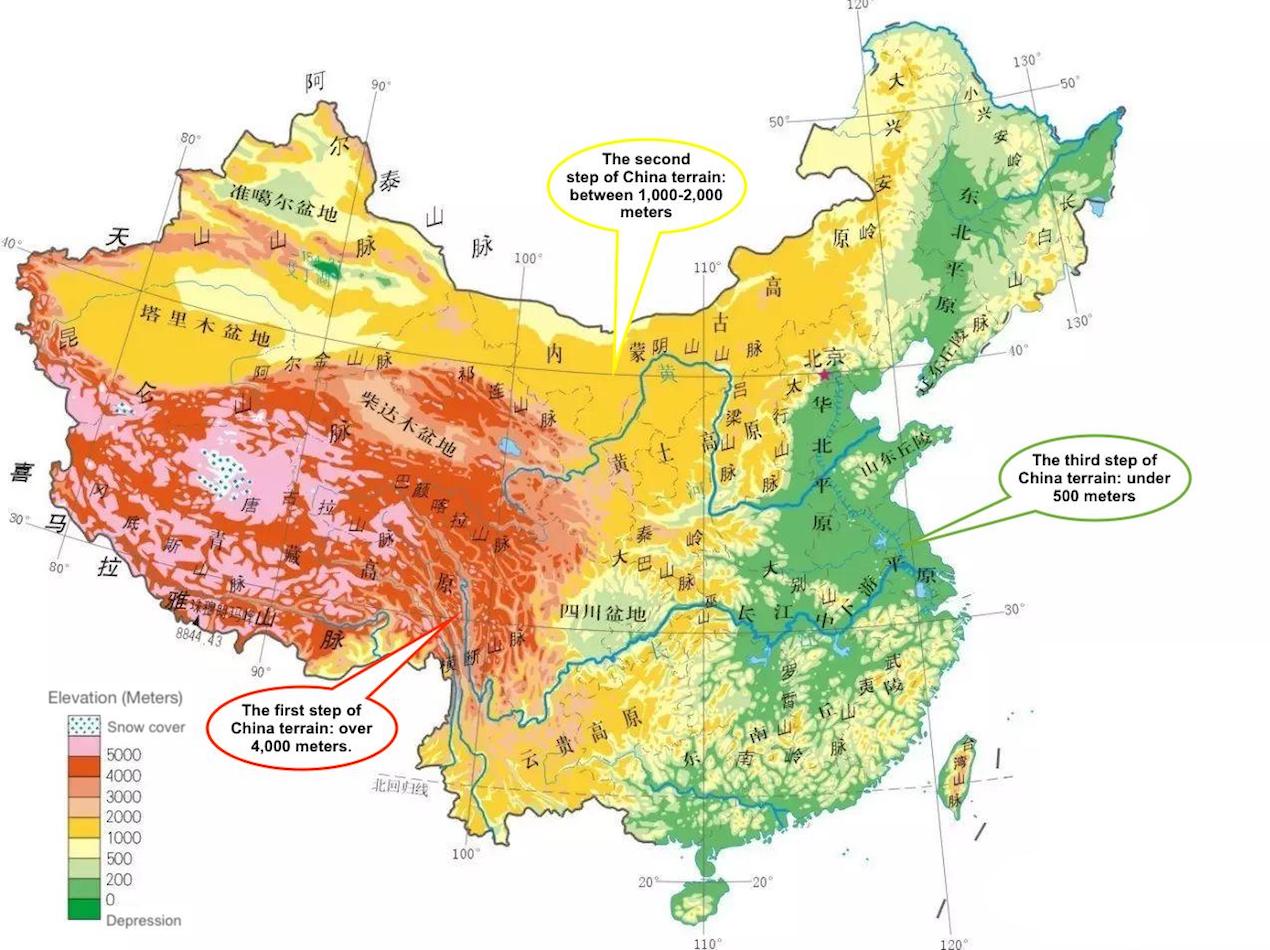(started page, it's still a blurb. Sources are taken from Dr. Ken Hammond's lecture directly (cited in references)) Tag: Visual edit |
m (typo) Tag: Visual edit |
||
| Line 63: | Line 63: | ||
== Intellectual ferment in the 11th century == | == Intellectual ferment in the 11th century == | ||
=== Art | === Art and the way === | ||
== Conquest states in the North == | == Conquest states in the North == | ||
Revision as of 20:34, 18 June 2023
This page is about the history of China until the establishment of the People's Republic. For the history of the People's Republic of China specifically, see History of the People's Republic of China.
The history of China dates back to more than 5000 years ago. China, like all state societies, went through the slavery, feudal and capitalist modes of production until the establishment of the People's Republic in 1949.
Geography of China

According to Dr. Ken Hammond of the New Mexico State University, to understand how China materially developed throughout its history, it's important to understand the geography of the country.[1]
The North China plain, at the mouth of the Yellow river, is to this day the agricultural heartland of China thanks to its low and flat terrain as well as the irrigation it receives from the Yellow river, and this plain is where Chinese civilisation first emerged.
Conversely, the South China plain is a region of hills and valleys, mostly south of the Yangtze river. Settlements in the south are divided off one another by these mountains, and river valleys tend to be where permanent settlements developed.
Rivers
The Yellow river has shaped China for millennia. It finds its source on the Tibetan Plateau, and snakes around Northern China until it empties into the Yellow sea, in the province of Shandong.
While the Yellow river has historically represented a challenge to China as it was prone to flooding, these floods brought with them fertile soil and irrigation to crops, and the river has always been primordial to the development of Chinese civilisation.
The Yangtze river further in the south has also been very important to Chinese civilisation historically, but less so than the Yellow river. It was still historically prone to flooding and consequently played a huge part in agriculture and sustaining life around it.
Prehistoric and early historic period
Early societies
According to Dr. Ken Hammond, the population of China itself has evolved in complex ways.[1] The earliest people to call themselves Chinese, which means "people of the black hair", lived in the North China plain. The earliest societies to emerge from this area were confederations of numerous tribal groups who defined themselves in contrast to those who were not Chinese, i.e. people who were not civilised. A number of terms exist in Chinese to define these people that are best translated to as "barbarians" in English (barbarians being what the Ancient Greeks similarly called any people who were not Greek).
Excavated pottery remains suggest that a single culture came to dominate the whole of the North China plain some 4000 to 6000 years ago. Characteristic pottery was discovered as originating from Dragon Mountain (Lungshan), and later showed up in other archeological sites.
Writing
One key element that made this first Chinese society define themselves as civilised (as opposed to what they defined as their barbarian neighbours) was a system of writing, which their neighbours did not possess. There is not much transitional evidence to the emergence of writing in China. That is to say, archeological evidence shows that once writing appears in China, it showed up as a fairly fully developed system, suggesting that writing appeared fairly quickly.
Mass migration
As Chinese civilisation expanded, neighbouring peoples, particularly in the South, were either displaced or assimilated. The Vietnamese and Thai people, for example, formerly lived in southern China and were displaced as part of this expansion to the South.
Some of these populations were forced further west, on higher elevation, and have remained there since then. Today, they are generally called hill tribe communities, and many of these groups retain distinctive identities in China: they retain their own language, their own cultural practice, and their own religion. Today, they constitute around 5% of the population of China. There are 54 such officially recognized ethnic minorities in China
This process happened around 2500 to 2000 years ago.